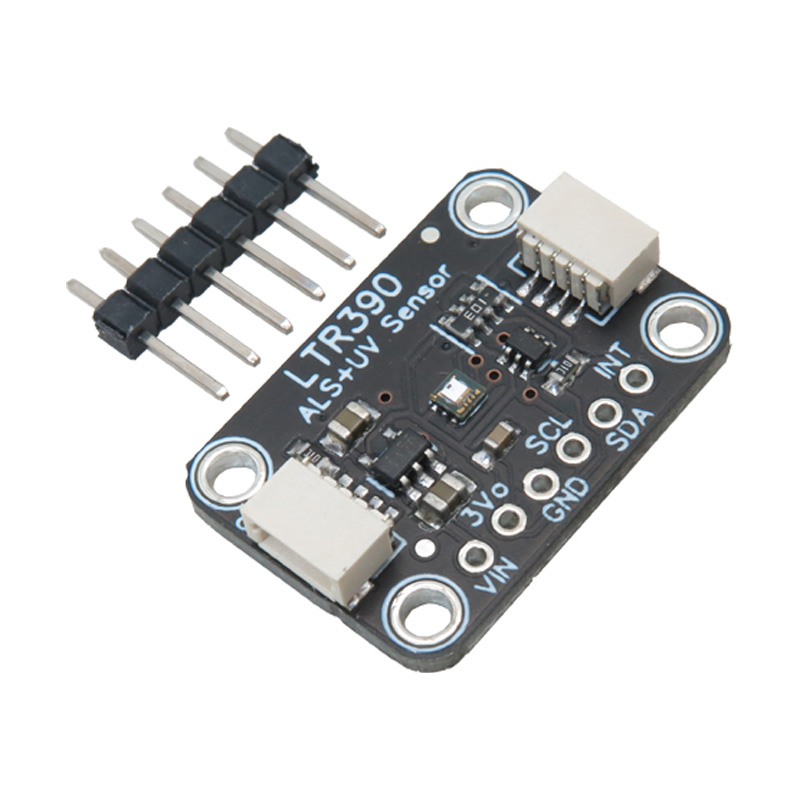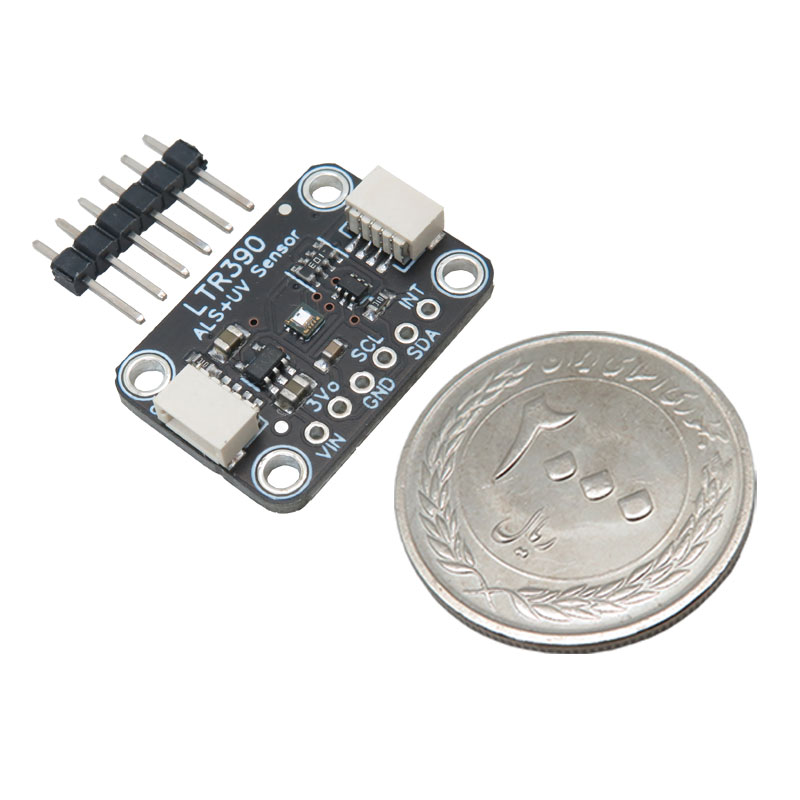هنوز هیچ رایی ثبت نشده است
ماژول اندازه گیر نور UV چیپ LTR390
کاربرد ماژول LTR390:
- تشخیص نور UV
- سنجش نور محیط
مشخصات ماژول سنسور فرابنفش LTR390:
- چیپ: LTR390
- محدوده اندازه گیری:
- ALS: 500nm to 600nm
- UVA: 300nm to 350nm
- ولتاژ تغذیه: 3 تا 5 ولت
- اینترفیس: I2C
- آدرس اینترفیس: 0x53
مستندات:
دیتاشیت ماژول LTR390
Description:
The LTR390 is one of the few low-cost UV sensors out there, and it's a pretty good one! With ambient light and UVA sensing capabilities, the peak spectral response is between 300 and 350 nanometers. You can use this to measure how much sunlight you can get before you need to cover it.
Unlike the Si1145, this sensor does not give you a UV index reading. However, Si1145 approximates the UV index based on light levels, rather than true UV sensing. In contrast, the LTR-390 does have a true light sensor in the UV spectrum. It also has a simpler I2C interface so you can easily run it on an Arduino or Python microcontroller/microcomputer. Unlike GUVA analog sensors, the bias and ADC are internal, so you don't need an ADC.
To make using it as easy as possible, we put the LTR390 on a breakout PCB in the Stemma QT form factor with a small amount of supporting circuitry to give you options while testing. You can use a breadboard or SparkFun qwiic compatible STEMMA QT connector and is compatible with the 5V voltage levels common on Arduinos, as well as the 3.3V logic used by many other boards like the Raspberry Pi or our Feathers. QT cables are not included, but we offer a variety of quick plug and play support in the store.
Application:
UV Meter
light sensitive application
UVA measurement
ALS
Specifications:
Chip: LTR390
Measuring range:
ALS: 500nm to 600nm
UVA: 300nm to 350nm
Supply voltage: 3V to 5V DC
Communication interface: I2C
Interface address: 0x53


